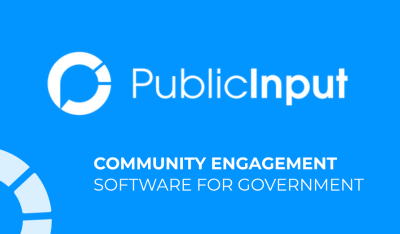
PublicInput recently hosted the webinar, Increasing Equity Through A Unified Approach to Community Engagement. For those who missed out, we’ve put together a mini-wrap up. You can also access our on-demand webinar recording in this post.
Key Takeaways
-
- A single system of record is important if you want to be able to communicate how all of your data points come together.
- Different residents respond to different types of engagement. It’s about what people feel comfortable with, who they feel comfortable with, and the method and space that they feel comfortable with.
- Before you begin an engagement process, think “what are my expectations for these participation processes over the years?” If you don’t understand your expectations early on, then you can hamper your ability to design effective processes.
- Understanding which communities you are reaching and which ones you aren’t is imperative. Using this data can help you save time, focus your efforts, and build strategies to target disengaged communities.
Access the on-demand recording of this webinar.
We don’t want to give away all of the details, but for those who don’t have time to watch the recording, here’s a more in-depth summary of what attendees learned.
The rising importance of a single system of record
Maintaining data integrity and building resident relationships is becoming more complex. This complexity highlights the need for a single system of record to capture, manage, and report on resident input. Fortunately, it’s never been easier to store all resident engagement data and contact information in one place.
What is a single system of record?
A single system of record is a device or place where you incorporate all of your information, such as:
-
- the information you’re gathering from the public directly,
- the information you’re gathering from your communications with them, and
- the information about your community: who’s participating, who isn’t, and how you can reach more potential participants in the future.
Incorporating all of this information into one place is really valuable for an effective engagement process.
How can a single system of record help with state and local governments with decision-making?
Without a single system of record, it’s difficult to quickly understand and communicate the public’s preferences for engagement, how they’ve participated so far, and how to measure the success of that engagement. We don’t necessarily value different types of input in the same way.
For example, is it the same if you have a thousand people participate in a survey and a thousand people participate in a workshop? It depends. Are they the same thousand people? Is there overlap between the participants or no overlap? A single system of record holds all this information in one place, making it easy to compare data and translate that data into a story.
How can PublicInput help?
Our goal is to help state and local governments be transparent in communicating the results of engagement data with the public and elected officials. This transparency can help elected officials make better decisions for their communities. PublicInput’s integrated CRM acts as a single system of record, one that can provide a 360 degree view of a participant’s engagement. All this data builds a foundation for transparency and communication.
Using PublicInput’s CRM, state and local governments can build reports, share data, group participants, and create custom segments for future outreach opportunities and weave all these elements together to tell a powerful story of engagement.



